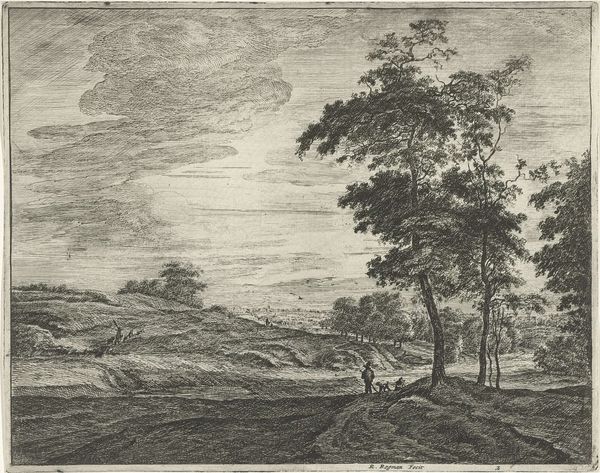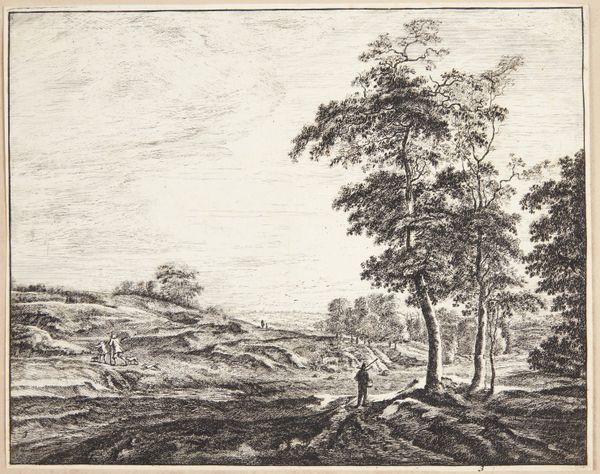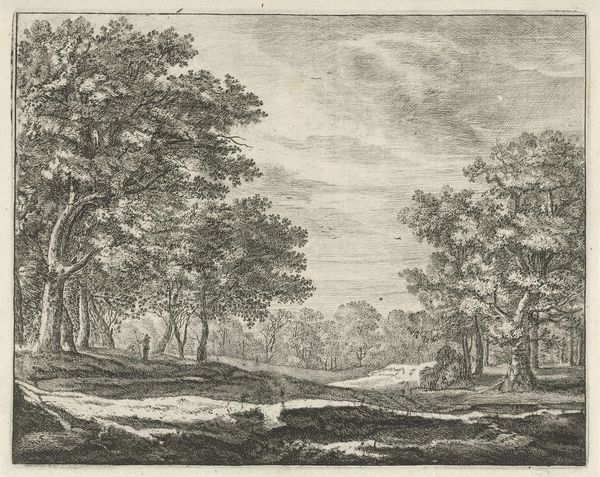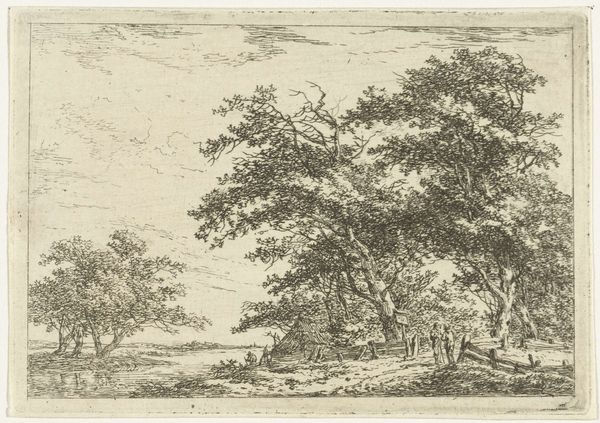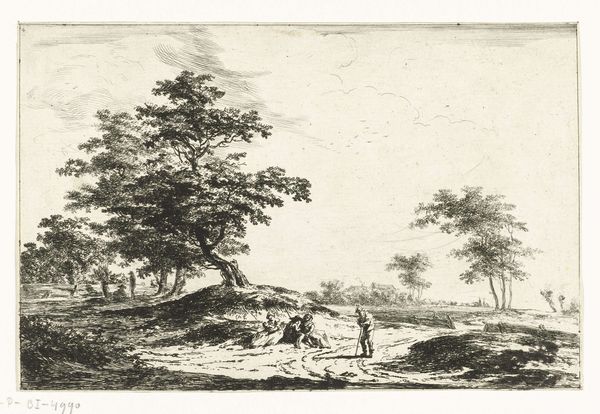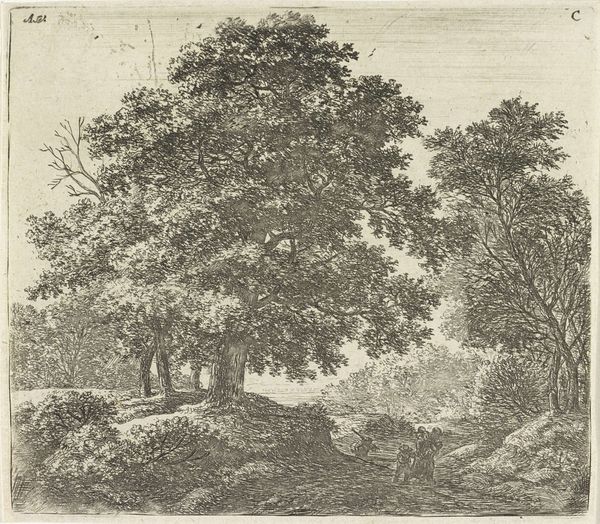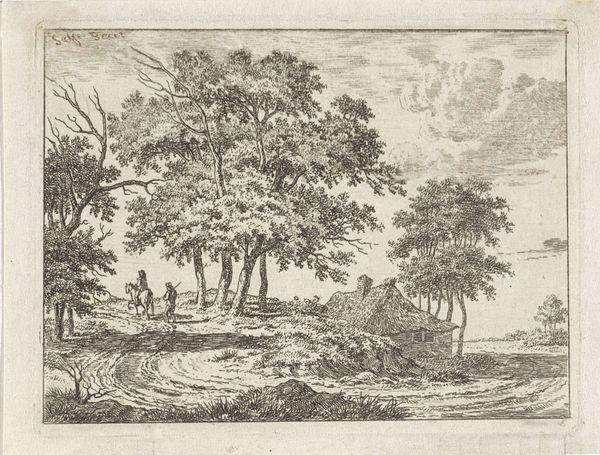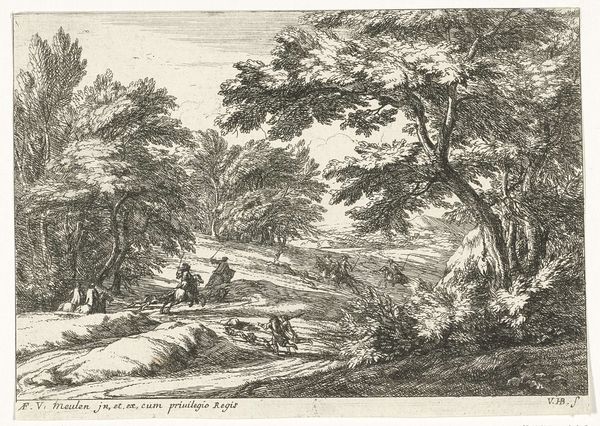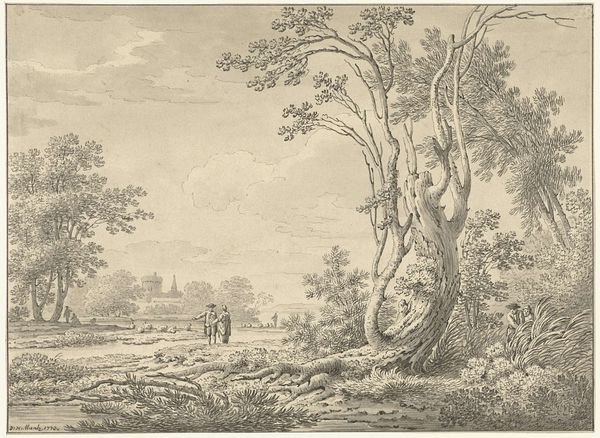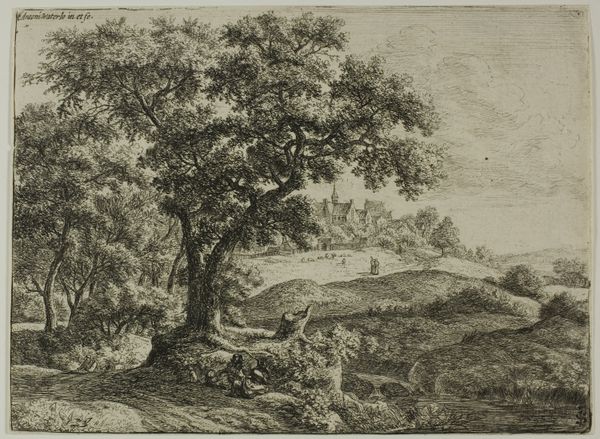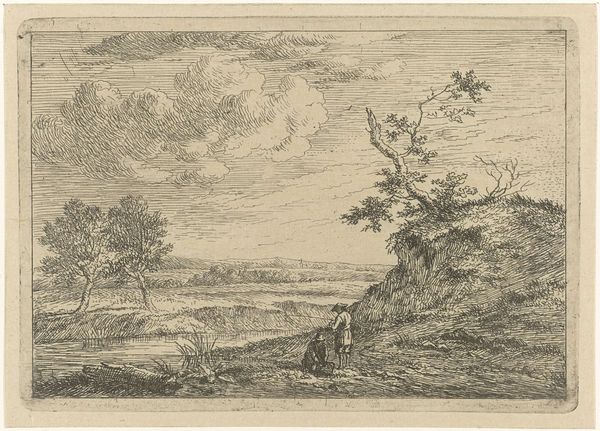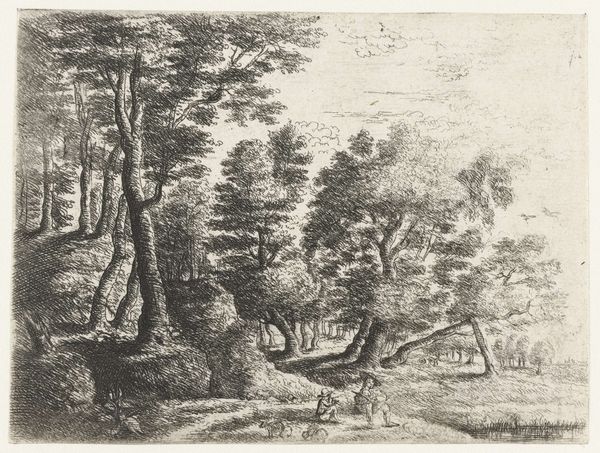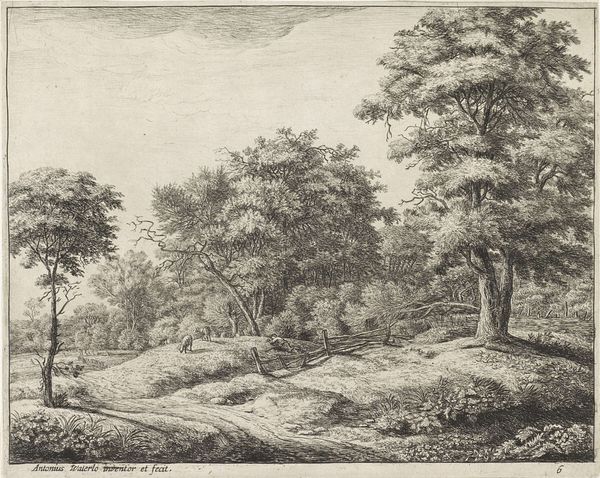
etching
#
dutch-golden-age
#
etching
#
old engraving style
#
landscape
#
forest
#
realism
Dimensions: height 210 mm, width 262 mm
Copyright: Rijks Museum: Open Domain
Roelant Roghman created this print of The Hague Woods using etching, a printmaking technique, sometime in the mid-17th century. Etching involves coating a metal plate with a waxy, acid-resistant substance called a ground. The artist then scratches an image into this ground, exposing the metal beneath. When the plate is submerged in acid, the exposed lines are eaten away, creating grooves. Ink is then applied to the plate, filling these grooves, and the surface is wiped clean. Finally, the plate is pressed onto paper, transferring the ink and producing a print. The character of the etched line is distinctive, capable of capturing fine detail. The technique allowed artists to reproduce their work efficiently, making images more accessible to a wider audience. This speaks to the growing market for art in the Dutch Golden Age, and the increasing professionalization of artists like Roghman. Through the interplay of labor, craft, and commerce, the beauty of The Hague Woods could be shared far beyond its physical boundaries.
Comments
No comments
Be the first to comment and join the conversation on the ultimate creative platform.
